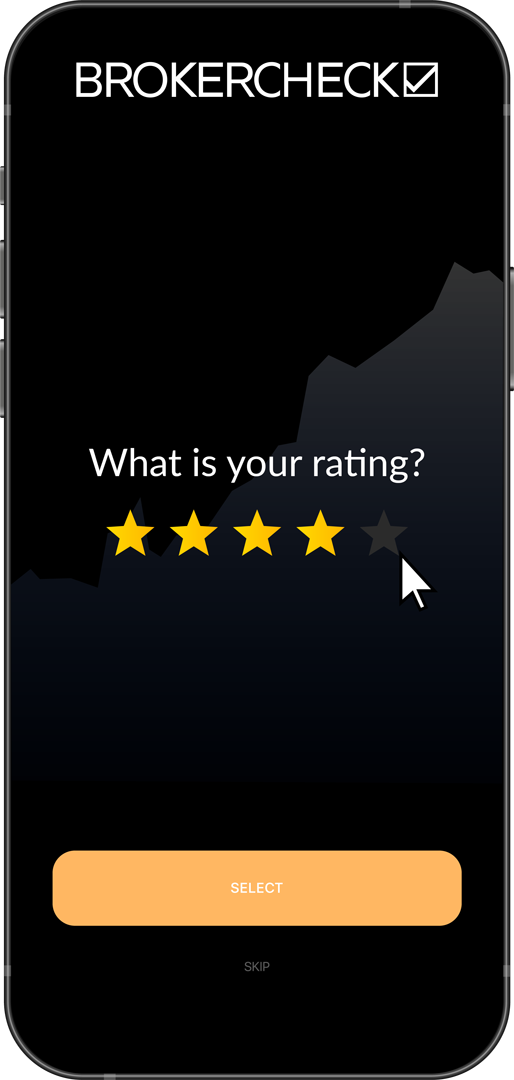1. Understanding Wheat Trading
Wheat is not just a staple food; it’s a commodity that fuels the global economy. The intriguing world of wheat trading is a dynamic space where the agricultural sector meets financial markets. Wheat trading is a form of commodity trading, where traders speculate on the future price of wheat. It’s a high-stakes game, with a host of factors influencing wheat prices, from weather conditions and crop diseases, to political instability and global supply-demand dynamics.
Spot trading and futures contracts are the two primary methods of trading wheat. Spot trading involves buying or selling wheat for immediate delivery and payment, while futures contracts are agreements to buy or sell a certain amount of wheat at a predetermined price on a future date. These contracts are traded on commodity exchanges and allow traders to hedge against price fluctuations, making them a popular tool for risk management.
Traders can also gain exposure to wheat prices through Exchange-Traded Funds (ETFs) and Contracts for Difference (CFDs). ETFs are investment funds traded on stock exchanges, while CFDs are financial derivatives that allow traders to speculate on wheat price movements without owning the underlying commodity. Both offer a more accessible route into wheat trading for beginners, with lower capital requirements and simpler trading mechanics.
Technical analysis and fundamental analysis are key skills for successful wheat trading. Technical analysis involves studying price charts and using statistical indicators to predict future price movements, while fundamental analysis involves assessing the broader economic and geopolitical factors that influence wheat prices.
However, wheat trading is not without its risks. Like all forms of trading, it’s subject to market volatility and potential losses. Therefore, it’s crucial to have a solid trading strategy in place, understand the market dynamics, and be prepared to adapt to changing conditions.
In the vast field of commodity trading, wheat trading stands as a testament to the intricate interplay between agriculture and finance. It offers traders a unique opportunity to engage with a vital global commodity, while navigating the thrilling highs and lows of the financial markets.
1.1. Basics of Wheat as a Commodity
Wheat, one of the world’s oldest and most treasured commodities, is not just a staple food in our diets, but also a dynamic asset in the trading market. Derived from a grass originally native to the Fertile Crescent region of the Near East, wheat has evolved over 10,000 years to become a globally traded commodity.
The versatility of wheat is one of its most compelling traits. It can be ground into flour for bread, used to brew beer, distilled into spirits, or even used as a feed for livestock. This versatility is reflected in the diversity of the wheat market, which is divided into several different types, including hard red winter, soft red winter, hard red spring, and durum, each with its own specific uses and trading dynamics.
The global wheat market is influenced by a variety of factors. Weather patterns play a significant role, especially as wheat is a cool-season crop that relies on specific conditions for optimal growth. Changes in global demand, particularly from populous nations such as China and India, can also have a major impact on wheat prices.
In addition, wheat production is a major economic activity in many countries, contributing significantly to their GDP. For instance, the United States, Russia, and Canada are among the largest wheat exporters, while Egypt, Indonesia, and Brazil are some of the largest importers.
While trading wheat, it’s important to keep an eye on the USDA’s World Agricultural Supply and Demand Estimates (WASDE), which provides comprehensive forecasts of supply and demand for major crops including wheat. This report can cause significant price volatility, making it a key tool for traders.
Trading wheat also requires understanding the futures market, as most wheat trading is done through futures contracts. These contracts, traded on exchanges like the Chicago Board of Trade (CBOT), specify a fixed price for a certain quantity of wheat to be delivered at a future date. This allows traders to hedge against price fluctuations and speculate on future price movements.
Wheat trading can be a complex field, but with the right knowledge and tools, it can also be a rewarding one. Whether you’re a farmer looking to hedge your crop, a speculator seeking profits, or simply a trader interested in diversifying your portfolio, wheat offers a world of opportunities.
1.2. Importance of Wheat Trading
Wheat trading stands as a cornerstone in the world of commodities trading. It is a staple food across the globe, which makes its demand and supply a key player in the world economy. This grain has been traded for thousands of years, and its importance in the modern world is no less significant.
The global wheat market is a dynamic and complex environment, with a multitude of factors influencing prices. These include weather patterns, global production levels, political stability, and even technological advancements in farming. As a trader, understanding these factors can give you a competitive edge.
Trading wheat also offers an opportunity to diversify your portfolio. Unlike stocks or bonds, the price of wheat is not directly tied to the performance of a single company or industry. This makes it a valuable addition to any investment strategy, providing a buffer against market volatility.
Moreover, wheat trading provides an opportunity to make a positive impact on the world. By participating in the wheat market, you’re contributing to a system that helps feed billions of people. Your trades help ensure that wheat gets from the fields to the tables of those who need it most.
In the world of commodities trading, few products carry the same weight and historical significance as wheat. Its importance cannot be understated, and for the savvy trader, it presents an opportunity for both financial gain and making a real-world difference.
2. Getting Started with Wheat Trading
Wheat trading, a cornerstone of the commodities market, is an exciting venture that can yield significant profits if approached with the right strategy and knowledge. The first step to getting started is understanding the market. Wheat is traded globally, and its price is influenced by a variety of factors, including weather conditions, geopolitical events, and changes in supply and demand.
Next, you’ll need to choose a trading platform. These platforms, often provided by brokers, offer a range of tools and resources to help you make informed trading decisions. Look for one that offers real-time market data, advanced charting tools, and the ability to execute trades quickly and efficiently.
Education is key when it comes to wheat trading. Take the time to learn about the different types of wheat contracts available (such as futures and options), how they work, and the risks involved. There are countless resources available online, including webinars, e-books, and online courses, that can help you deepen your understanding of the wheat market.
Finally, develop a trading plan. This should include your trading goals, risk tolerance, and the strategies you plan to use. A well-thought-out trading plan can help you stay focused and disciplined, even when the market is volatile.
Remember, wheat trading is not without risk. But with careful planning, ongoing education, and a solid understanding of the market, you can position yourself for success.
2.1. Understanding Wheat Futures
Wheat futures are a type of financial contract where the buyer agrees to purchase a specific quantity of wheat from the seller at a predetermined price on a future date. These contracts are traded on commodity exchanges and are a popular way for traders to speculate on the future price of wheat.
The price of wheat futures is influenced by a variety of factors. These include weather conditions, which can affect the supply of wheat, and changes in global demand for wheat products. For example, if there is a drought in a major wheat-producing region, this could lead to a decrease in supply and an increase in the price of wheat futures. Conversely, if there is a decrease in global demand for wheat products, this could lead to a decrease in the price of wheat futures.
Trading wheat futures can be a profitable venture, but it also comes with a high level of risk. This is because the price of wheat futures can be very volatile, with large price swings occurring in a short period of time. Therefore, it’s important for traders to have a solid understanding of the factors that influence the price of wheat futures and to use risk management strategies to protect their investment.
When trading wheat futures, traders have the option to either take physical delivery of the wheat or to settle the contract in cash. Most traders choose to settle in cash, as this is more convenient and less risky than taking physical delivery of the wheat. However, some traders may choose to take physical delivery if they have a need for the wheat or if they believe that the price of wheat will increase in the future.
In addition to trading wheat futures, traders can also trade wheat options. Wheat options give the buyer the right, but not the obligation, to purchase or sell a wheat futures contract at a specific price on or before a certain date. This can provide traders with additional flexibility and potential profit opportunities, but it also adds another layer of complexity to wheat trading.
Overall, wheat futures are a versatile and potentially lucrative trading instrument, but they require a thorough understanding and careful management. Whether you’re a seasoned trader or a beginner, it’s important to educate yourself about the intricacies of wheat futures before diving into this market.
2.2. How to Trade Wheat
Trading wheat is an opportunity to tap into one of the world’s most vital commodities. The process begins by understanding the market dynamics. The price of wheat is influenced by various factors, including weather conditions, global demand, and geopolitical issues.
Step 1: Market Research. Before you start trading, it’s crucial to conduct thorough market research. This includes studying historical price trends, understanding the impact of weather patterns on wheat production, and keeping an eye on news that could affect global supply and demand.
Step 2: Choose a Trading Strategy. Once you have a good grasp of the market, you need to choose a trading strategy. This could be anything from day trading, where you buy and sell within the same day, to position trading, where you hold your position for a longer period.
Step 3: Select a Trading Platform. Your trading platform is your gateway to the market. It should be reliable, user-friendly, and offer the tools and resources you need to execute your strategy effectively.
Step 4: Start Trading. Now that you’re equipped with knowledge and tools, it’s time to start trading. Remember, trading involves risks, so it’s important to manage your risk effectively.
Step 5: Review and Improve. Trading is a continuous learning process. Regularly review your trades and learn from your successes and failures. This will help you refine your strategy and improve your trading performance over time.
Trading wheat, like any other commodity, requires knowledge, strategy, and discipline. But with careful planning and continuous learning, it can be a rewarding venture.
3. Advanced Wheat Trading Strategies
Mastering the art of wheat trading demands a deep understanding of the market and the application of advanced strategies. One of the most effective strategies is seasonal trading. Wheat, like other commodities, follows certain seasonal patterns. For instance, prices often rise in the spring due to planting uncertainties and decline in the fall during harvest. By understanding these patterns, traders can anticipate market movements and trade accordingly.
Another advanced strategy is fundamental analysis. This involves closely monitoring factors such as weather patterns, crop reports, and political events that can impact wheat supply and demand. For example, drought in a major wheat-producing region can lead to a decrease in supply, pushing prices up. Conversely, a bumper harvest can increase supply, leading to a drop in wheat prices.
Technical analysis is another key tool for advanced wheat traders. This involves studying price charts and using indicators to identify trends and predict future price movements. For instance, traders might use moving averages to identify a potential bullish or bearish trend in the wheat market.
Lastly, hedging is a common strategy used to manage risk in wheat trading. This involves taking a position in the futures market to offset potential losses in the physical market. For instance, a wheat farmer might sell wheat futures to lock in a price and protect against a potential fall in wheat prices.
In essence, advanced wheat trading strategies involve a combination of seasonal trading, fundamental and technical analysis, and risk management through hedging. By mastering these strategies, traders can navigate the wheat market with greater confidence and potentially achieve higher returns.
3.1. Fundamental Analysis in Wheat Trading
As a wheat trader, your success hinges on your ability to accurately predict market trends. One powerful tool in your arsenal is Fundamental Analysis. This involves studying the various economic, social, and political factors that could potentially impact wheat prices. For instance, weather patterns play a crucial role in wheat production. Unfavorable weather conditions such as drought or frost can drastically reduce the global wheat supply, driving up prices.
On the other hand, geopolitical events can also have a significant impact. Trade policies, tariffs, and international relations can either open up new markets or restrict access to existing ones, influencing demand and, consequently, wheat prices.
Moreover, economic indicators like GDP growth rates, inflation, and employment data can provide insights into the health of the economy. A strong economy typically implies high demand for wheat as people have more disposable income to spend on food. Conversely, an economic downturn might lead to decreased demand.
Lastly, don’t forget to consider the competition. Wheat competes with other grains such as corn and rice. Changes in the prices of these commodities can shift demand away from or towards wheat.
Remember, fundamental analysis is not about predicting exact price movements. Instead, it’s about understanding the various factors that influence wheat prices, so you can make informed trading decisions. By keeping a close eye on these factors, you can anticipate market trends and position yourself for success in the wheat trading market.
3.2. Technical Analysis in Wheat Trading
As you dive deeper into the world of wheat trading, understanding technical analysis becomes an essential tool in your trading arsenal. Unlike fundamental analysis that focuses on the intrinsic value of wheat, technical analysis is primarily concerned with patterns, trends, and price movements within the wheat market.
Charting is a key component of technical analysis. Traders use charts to visually represent price movements over a specified period. These charts can be as simple as a line graph or as complex as a candlestick chart, which provides information about the opening, closing, high, and low prices during a specific trading period.
Trend lines, which are lines drawn over pivot highs or under pivot lows, help traders visualize the direction of the market. An upward trend line is drawn at the pivot lows, while a downward trend line is drawn at the pivot highs. When the market breaks a trend line, a significant change in the market’s direction is often expected.
Another crucial aspect of technical analysis in wheat trading is indicators. These are mathematical calculations based on a security’s price and volume. Moving averages, Relative Strength Index (RSI), and MACD are some of the commonly used indicators. For instance, a moving average smoothens out price data to create a line that traders use to identify price trends.
Support and resistance levels are also vital in technical analysis. These are price levels at which the wheat price tends to stop and reverse. Support is the price level at which demand is thought to be strong enough to prevent the price from falling any further, while resistance is the price level at which selling is thought to be strong enough to prevent the price from rising further.
Despite its numerous benefits, remember that technical analysis is not a crystal ball that predicts the future. It is a tool traders use to calculate probabilities. Therefore, combining it with other analysis methods can greatly increase your success rate in wheat trading.
4. Legal and Regulatory Considerations
In the realm of wheat trading, understanding legal and regulatory considerations is as crucial as knowing your wheat varieties. The first stop in this journey is the Commodity Futures Trading Commission (CFTC). This U.S. federal agency regulates the commodity futures and options markets, ensuring the integrity of these markets and protecting market participants from fraud, manipulation, and abusive practices.
Another key player is the National Futures Association (NFA), a self-regulatory organization for the U.S. derivatives industry. The NFA develops rules, programs, and services to safeguard market integrity, protect investors, and help members meet regulatory responsibilities. As a wheat trader, becoming familiar with the NFA’s regulations and compliance requirements is essential.
In addition, wheat traders must comply with the rules of the exchange where their trades are executed. For instance, the Chicago Board of Trade (CBOT), a leading platform for wheat futures trading, has its own set of regulations that traders must adhere to.
Moreover, wheat traders should be aware of the U.S. Department of Agriculture (USDA) and its role in establishing standards for grain quality, inspecting grain, and reporting on supply and demand conditions. The USDA’s reports can significantly impact wheat prices, making them a key consideration for traders.
Lastly, international traders need to comply with the laws and regulations of the countries they are trading with. This includes understanding import and export regulations, tariffs, and any restrictions on genetically modified organisms (GMOs).
In summary, the legal and regulatory landscape of wheat trading is complex and ever-changing. Traders must stay informed and compliant to navigate successfully in this field.
4.1. Regulatory Bodies in Wheat Trading
In the intricate world of wheat trading, understanding the role of regulatory bodies is essential. These governing entities ensure a fair, transparent, and competitive market environment. The United States Department of Agriculture (USDA) is one of the key players in this arena. The USDA releases regular reports on crop production, supply, and demand that can significantly impact wheat prices.
Commodity Futures Trading Commission (CFTC) is another crucial body that oversees the futures and options markets for wheat and other commodities. The CFTC aims to protect market users from fraud, manipulation, and abusive practices. It also ensures the integrity of the commodity futures and options markets.
Internationally, the Food and Agriculture Organization (FAO) of the United Nations plays a vital role. The FAO provides information on global food supply and demand, including wheat, which can influence international wheat trading.
Finally, the International Grains Council (IGC) is a London-based intergovernmental forum of exporting and importing countries for cooperation in wheat and other grains trade. The IGC provides market transparency by sharing information on global supply and demand and market trends.
Understanding the role and influence of these regulatory bodies can greatly enhance your wheat trading strategies. It is through their reports and updates that traders can make informed decisions, predict market trends, and ultimately, achieve success in the wheat trading market.
4.2. Legal Considerations in Wheat Trading
Wheat trading is not just about understanding market trends and price fluctuations. It’s also about comprehending the legal aspects that can significantly impact your trading experience. The first thing to understand is the role of commodity futures contracts. These are legal agreements to buy or sell a particular commodity at a predetermined price at a specified time in the future. They are standardized in terms of quality, quantity, and delivery time and location.
The Commodity Futures Trading Commission (CFTC) is the regulatory body that oversees these contracts in the U.S. It’s crucial to familiarize yourself with the rules and regulations set by this body to ensure you’re trading within the legal framework.
Wheat trading also involves understanding international trade laws. The World Trade Organization (WTO) sets the rules for global trade, and any disputes between countries regarding wheat trade are settled here. Therefore, being aware of any ongoing trade disputes or changes in trade policies can provide valuable insights for your trading strategy.
Contract law is another important aspect to consider. When you enter into a futures contract, you are legally bound to fulfill the terms of the agreement. Failure to do so can result in legal consequences. Hence, it’s advisable to thoroughly understand the contract terms before committing.
Lastly, it’s essential to be aware of the tax implications of wheat trading. The profits you make from trading are subject to taxes, and the rates can vary depending on your country of residence. Consult with a tax professional to understand your tax obligations better.
In essence, the legal considerations in wheat trading are as crucial as the trading strategies themselves. Understanding these aspects can help you trade more confidently and avoid potential legal pitfalls.










